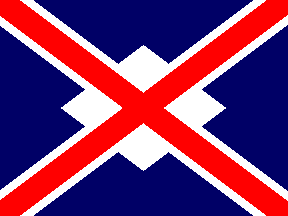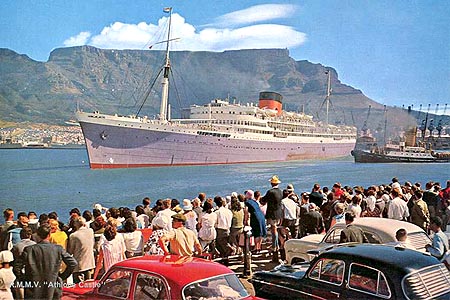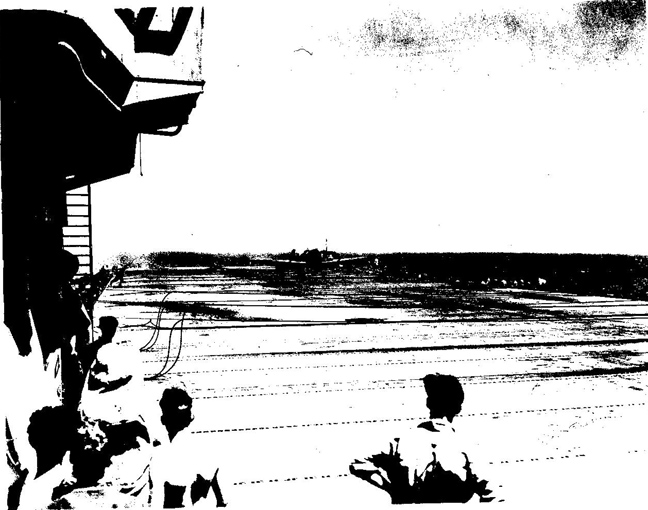| Author |
 Topic Topic  |
|
thomo
Barlick Born Old Salt
 

2021 Posts

|
|
 Posted -
11/02/2006
:
16:01 Posted -
11/02/2006
:
16:01
|
SIX GENERATIONS. I WAS THE FIFTH ,& THE OLDEST MAN TO JOIN THE NAVY SINCE WW2. I ENTERED THE RN. ON MARCH 13th 1972 JUST UNDER THE AGE LIMIT OF 32. BASIC TRAINING WAS AT HMS RALEIGH (TORPOINT) AND I WAS MADE CLASS LEADER IN THE FIRST WEEK. 22 MEN FROM ALL OVER THE UK MADE UP COLLINGWOOD CLASS 11, JOHN GREENBANK FROM EARBY WAS IN MY CLASS. WE ALL WORKED HARD AND WON THE "CAKE"FOR THE BEST TURNOUT EACH OF THE SIX WEEKS WE WERE THERE. I WAS AWARDED THE CAPTAINS PRIZE FOR THE HIGHEST OVERALL MARKS AND AT "PASSING OUT" PARADE, I WAS PRESENTED WITH MY GOLD INSIGNIA BY PRINCESS ANNE. PART TWO OF TRAINING TOOK PLACE AT HMS SULTAN(GOSPORT) THE NAVY MARINE ENGINEERING SCHOOL. JOHN GREENBANK PROVED HIMSELF TO BE A GOOD ATHLETE AND MY LADS TOOK THE LIONS SHARE OF FIRSTS ON SPORTS DAY. AT THE END OF PART TWO TRAINING THREE OF US STAYED AT SULTAN TO DO THE SSMEM COURSE HAVING GAINED THE MARKS REQUIRED FOR ACCELERATED ADVANCEMENT, THE OTHERS WERE DRAFTED TO SHIPS. A FURTHER TWO MONTHS WERE SPENT ON TRAINING AND I THEN JOINED HMS GRENVILLE(FRIGATE) FOR SEA TRAINING. THUS IT BEGAN. MORE TO FOLLOW.
thomo
|
|
| Replies |
| Author |
|
|
Invernahaille
|
 Posted - 20/03/2007 : 18:04 Posted - 20/03/2007 : 18:04
Moh. The Castle ships you refer to, are the R.M.S. (Royal Mail Ships) of the Union Castle line.
 |
Invernahaille
|
 Posted - 21/03/2007 : 01:18 Posted - 21/03/2007 : 01:18
 The House flag of Union Castle Line The House flag of Union Castle Line
Edited by - Invernahaille on 21 March 2007 01:24:08
 |
Invernahaille
|
 Posted - 21/03/2007 : 02:03 Posted - 21/03/2007 : 02:03

RMS Athlone Castle at Capetown South Africa (circa 1962). These ships were cruising at twenty plus knots when most other shipping companies were happy to be doing 15-16 knots.
 |
HerbSG
|
 Posted - 21/03/2007 : 05:05 Posted - 21/03/2007 : 05:05
Thomo you mention the Ajax, here in the city of Ajax in Ontario, a suburb of Toronto, most of the street names are taken from the crew list of the Ajax and a sister ship..just as a point of interest for you. On a regular basis there are survivors over here for visits.
HERB
 |
HerbSG
|
 Posted - 21/03/2007 : 05:29 Posted - 21/03/2007 : 05:29
Just a little more on Ajax, in 1941 a defence industries shell plant was constructed and the town grew from there. By 1945 40 million shells had been filled, the plant employed 9000. The town had not been named, the name was picked after the Battle of River Platte, and as I mentionned street names came from the crews of the Ajax, the Exeter and the Achilles.
The next town along Lake Ontario's shoreline, Whitby was the home of Camp X where British and American spies were trained, and the story goes that a lot of the Bond material came from. Agents for an alphabet soup of agencies: SIS, SOE, BSC, FBI, OSS, OWI & the RCMP were all trained here with William Stephenson as the Head of the British Security Coordination.
HERB
 |
frankwilk
|
 Posted - 22/04/2007 : 22:01 Posted - 22/04/2007 : 22:01
Just re read this thread again,
1 I owe it a story ( promise soon )
2 Doc when was you on the Fearless ??
3 I see you was also on the Penelope when was that ???
Reasons for Q 2 I was on the Fearless 66/68 first commission
Reason for Q 3 We lived in married quarters in the early 70s in St Budeaux and certainly two matelots in the block served on the Penelope
Frank Wilkinson Once Navy Always Navy  |
moh
|
 Posted - 26/04/2007 : 15:29 Posted - 26/04/2007 : 15:29
Just found out today my mother's cousin was in the Navy in WW2 and was killed when the destroyer HMS Quorn, on which he was a writer, was sunk in the Seine Bay during the Battle for Normandy on 3/8/1944. The ship sunk in one minute after it was split in two when it was hit by a German 'kamikaze' riding a human torpedo, there were 130 survivors. I thought it was only the Japanese who did the 'kamikaze' hits.
Say only a little but say it well  |
frankwilk
|
 Posted - 26/04/2007 : 16:30 Posted - 26/04/2007 : 16:30
Just looked this up
WARTIME DESTROYER HMS QUORN IS REMEMBERED 27.08.04 12:51
Sixty years to the day that her forebear was lost to a human torpedo, mine countermeasures vessel HMS Quorn hosted a group of widows, daughters, brothers and survivors of the tragedy at an emotional memorial service.
Wartime destroyer HMS Quorn sank with 130 men when she was struck amidships in the Seine Bay as the Battle for Normandy raged on land in the summer of 1944.
Six decades on around 30 people, from as near as Waterlooville and as far as Norfolk, gathered in Portsmouth Naval Base with the present ship’s company to honour Quorn’s sacrifice.
The destroyer sank in less than a minute, the victim of an act of bravery – and sacrifice – by a German ‘kamikaze’ riding a human torpedo.
It is a loss still felt deeply, as is demonstrated by the remembrance service in St Ann’s Church to mark the tragedy in the early hours of August 3 1944.
Leading the service, chaplain Father David Yates said: “It is very difficult in this day and age to put ourselves in a mindset of how it was in 1944.
“There was a sense we were in the endgame, coming towards the end of the war, and no one serving in HMS Quorn would have expected the ship to be sunk underneath them. Today we remember all those who didn’t make it.”
After the service, the guests, including Lady Rosemary Thompson, the present ship’s sponsor, were invited back to Quorn for refreshment and a tour of the ship.
“We couldn’t let this day go past without some special form of commemoration,” said Quorn’s Commanding Officer, Lt Cdr David Wilkinson.
“When I put the idea to the ship’s company, to a man they were keen.
“Today is about the meeting of two parts of Quorn’s life, and today we bring them together. This is your ship, you are part of Quorn’s family, a really friendly and family-oriented ship.”
Among those with poignant memories of the sinking was Lilian Evans, a former Wren who served at HMS Dryad.
“It’s an honour to have been asked to come,” she said.
Her husband, LSTD Percy Evans, went down with the ship at the age of 26.
Lilian, who had travelled from Norwich with her 60-year-old daughter, showed photographs of Percy’s immaculately-tended grave in France, which she visits as regularly as possible.
“You couldn’t wish for him to be brought back,” she said. “It’s a peace beyond all understanding.”
Survivor Christopher Yorston, an AB at the time, told Navy News: “I had to grow up fast.”
Already having been torpedoed twice while serving in the Mediterranean earlier in the war, Christopher, in Portsmouth with his wife of 54 years, was up in the gunnery tower when Quorn was hit.
“Within seconds I was in the water, looking up at the ship split in half,” he said. “If I had been in a cruiser, where the gun turret is completely sealed, I’d have been a goner.
“I grabbed hold of the first thing in the water, a lump of wood, and a converted trawler picked me up. It’s the luck of the draw.
“Today has been marvellous. It helps to enlighten people about what went on.”
Frank Wilkinson Once Navy Always Navy  |
moh
|
 Posted - 26/04/2007 : 21:52 Posted - 26/04/2007 : 21:52
That is where I got my info from - about the ship that is - other info (apart from my Aunty) came from CWGC site
Say only a little but say it well  |
frankwilk
|
 Posted - 26/04/2007 : 22:18 Posted - 26/04/2007 : 22:18
Hi Moh,
The CWGC is a good site for searching. I only posted the Ships info so that others could read about the "human torpedo" first time I had ever heard about it until I saw your post.
Frank Wilkinson Once Navy Always Navy  |
moh
|
 Posted - 27/04/2007 : 09:23 Posted - 27/04/2007 : 09:23
I'd never heard of it either - wonder how he got on it - obviously was strapped on, but did not think the torpedo tubes would be big enough for both man and torpedo.
Say only a little but say it well  |
handlamp
|
 Posted - 10/05/2007 : 16:06 Posted - 10/05/2007 : 16:06
Eureka! - RAIN and we lads who till the fields can have a `rest' and continue MY NAVY SERVICE.
The Khedive was one of the Ruler Class, so called `Woolworth's Carriers', having been built in Seattle, USA as part of the `lease lend' arrangements. When I joined she had just come from the States, having been commissioned earler in the year, and was engaged in her `working up' trials in the Irish Sea. We spent a few weeks on this exercise and occasionally had the `treat' of shore leave at Bangor or Lamlash on the Isle of Arran.
My job was to assist Leading Supply Assistant Archie Lock in the stores responsible for the supply of all naval stores and clothing. Whenever action was threatened my `action station' was one of a small damage control party of six ratings under the command of a Leading Seaman based on my mess deck. Fortunately, in the eight months I was on board, we did not have any damage to attend to although, from time to time, we were called on to the Flight Deck to stand by in our anti flash gear armed with stirrup pumps, fire extinguishers, axes etc..
At first, whilst on our `working up' trials, a few Fairey Swodfish aircraft operated from the vessel. These were affectionally known as `Stringbags' due to rheir antiquated biplane structure, with numerous struts and bracing wires. Their primary function was that of a torpedo-dropper and they had done an excellent job earlier in the war, particularly when the Italian Fleet was decimated at Taranto in November 1940. They always struck me as unwieldy on our small carrier although not as bad as the Barracuda which followed them. When the latter flew on at least two went straight over the end of the flight deck and finished up in the sea with the loss of plane and pilot. We were then joined by a squadron of Seafires (the Fleet Air Arm Spitfires), most effecient machines, well suited to the small flight deck, which were to remain with us up to my leaving the ship.
Early May found us swinging round a buoy in Scapa Flow from where we operated with a small task force seeking out, and attacking the Tirpitz, which was hiding in a Norwegian fyord. In early June we were part of a much larger force sailing towards Norway, presumably as a decoy to try to persuade `Jerry' that the long awaited Second Front was to be established in that country. A few days after D Day we sailed to Rosyth where, I recall, the ship's company lined the flight deck to cheer the 35,000 ton battleship, HMS Warspite and her crew as she limped into that port fresh from her triumphs off the coast of Normandy. From a position fifteen miles away her fifteen inch guns had, on 12th June, poured sixty tons of high explosives into a sdmall wood where there was a concentration of enemy forces. A CBC broadcast stated `the naval bombardment razed the wood and blasted the takns off the face of the earth'.
A few days later we were steaming south when the `buzz merchants' really got busy. Our first port of call was when we anchored for a day in a Sardinian bay where some trading with the occupants of small boats took place `over the side'. So far as I can recollect, `pussers' soap was a much sought after commodity by these traders. We then did some exercises in the Mediterranean in between calls at Malta and Aelexandria. Valletta Harbour was still littered with the damage and wrecks resulting from the German bombing, but life had returned to normal in the town itself whose economy was very much dependant on the Royal Navy. One night when returning to the ship after an evening in Alexandria I was set upon by a local ruuuian who attempted to knife me in the struggle which ensued. Fortunately the the point of his knife stuck the cigarette case in my breast pocket and my one and only attempt to wash my white ducks in bleach had so weakened the material that a large chunk of it came away in his hand and I was able to make good my escape.
Another operation took place between Crete and the Greek islands when our planes were flying off to attack targets on the islands. It was rumoured at one stage, that our skipper (Captain Haynes DSO) was threatening to take the ship in stern first to shell some German installations on one of the islands. Such an hazardous course being necessary to make full use of our four inch guns mounted at the stern. Thankfully we pulled out before this `splendid' idea was put to the test.
Gradually, it became apparent that a large force was gathering in the Med. Among the warships we came across were the battleships USS Texas and USS Nevada (survivor of the Japanese attack on Pearl Harbour). We also came across the British battleship HMS Ramillies and cruisers HMS Black Prince and HMS Ajax. Ajax was the ship made famous in the battle of the River Plate when the Graf Spee was forced to take shelter in the port of Montevideo, where eventually her commander scuttled her. Little did we know that we were part of a hugh armarda of 1000 vessels vessels, including 247 warships, so immense, we were later to learn, that it covered more than fifteen thousand square miles of the Mediterranean. This was the force assembled for the invasion of Southern France. code name operation Dragon.
It was normal practice for the crews of all RN ships to `close up' at action stations at dusk, the alleged optimum time for submarine attack. This habit was obviuosly not followed by the US Navy as their men could be observed taking part in such games as deck hockey, much to the annoyance of many of ur crew.
On 15th August, the day of the invasion, our small group was stationed a good few miles off the French coast, east of the port of Toulon, our planes being flown off to give cover to the seaborne landing forces. We therefore did not see any of the action but our pilots reported that german air activity was very light. This was the first time I had heard of, so called, `friendly fire' when at least two of our pilots returned complaining that their aircraft had been strafed by American planes when returning from the beachhead.
In early September we returned to `Blighty' and anchored off Sheerness when one of our crew received news that his wife had been killed by an alleged bomb landing at lunch time the previous day on a Woolworth's store in the East End. This later turned out to have been a V2 rocket. Originally the Government censored all reports of these missile as it was feared that they would have lowered morale. After six weeks Churchill told the nation the truth as rumours, like the rockets, proved to be unstoppable. Whilst we had been in the Med. the V1, so called `buzz bombs', had started arriving. They were characterised by the silence that ensued when the engine cut out, after which the `bomb' fell to earth. Some of the pilots eventually got the knack of going out to meet these objects and tipping them over with their wings when they would fall harmlessly into the sea.
My prootion to leading hand from 2nd September meant that my days on the Khedive, which was undergoing a small refit ready for the Far East, were numbered. Eventually, my replacement came on board and I left the ship on 5th December 1944 with instructions to report to my depot, HMS Drake after leave.
Ted |
Stanley
Local Historian & Old Fart
    

36804 Posts

|
|
 Posted - 11/05/2007 : 16:53 Posted - 11/05/2007 : 16:53

Stanley Challenger Graham

Barlick View
stanley at barnoldswick.freeserve.co.uk  |
Stanley
Local Historian & Old Fart
    

36804 Posts

|
|
 Posted - 11/05/2007 : 17:44 Posted - 11/05/2007 : 17:44
Ted, the pics weren't very good quality, too contrasty, and the one of the captain speaking wouldn't load. Sorry old lad.....
Stanley Challenger Graham

Barlick View
stanley at barnoldswick.freeserve.co.uk  |
handlamp
|
 Posted - 12/05/2007 : 16:49 Posted - 12/05/2007 : 16:49
Stanley, thanks for that, and I thought the one of the skipper addressing the ship's company had come out best!
The pic displayed is of the first seafire (although you have a job to make it out) landing back on the Khedive returning from the first sortee covering the invasion of Southern France. Far better pic, now posted below - you can even make out the lad dashing out, probably with fire extinquisher or ? chocks.
Edited by - handlamp on 16 May 2007 14:44:50
Ted |
|
|
|
|